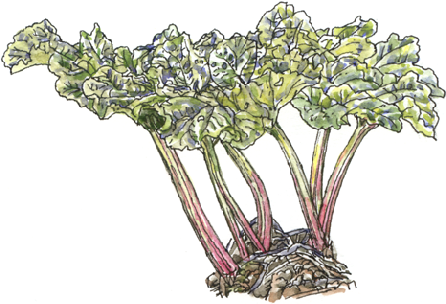previous | home page | this month| e-

Rhubarb
Richard Bell’s Wild West Yorkshire nature diary, Wednesday, 3rd December 2008
previous | home page | this month| e-

THERE’S A BIT of a break in the supply of rhubarb at the moment. Small quantities are beginning to come in from abroad (from the Netherlands) but it’s quite expensive.
The rootstocks of locally grown rhubarb are currently being exposed to the cold. Garden rhubarb, Rheum rhaponticum, apparently originated in Siberia and Mongolia. It needs to be dormant and go through a cold spell to encourage it to put out tender new shoots. When the rootstocks have had a sufficient degree of exposure, which will vary according to the severity of the weather, they are brought in to long, low, dark but warm forcing sheds. There’s no stopping it then; they say that you can actually hear rhubarb growing. I’m told there’s a soft rustling as the leaves unfurl.
In January the tender new shoots will be harvested, traditionally by candlelight so that the leaves remain blanched and yellowish. Perhaps the carbon dioxide given off by the candles gives a boost to growth.
In The Self-
RHUBARB (CULINARY, or TART.)-
Descrip.-
Place.-
Time.-
Government and Virtues.-
Culpepper’s British Herbal